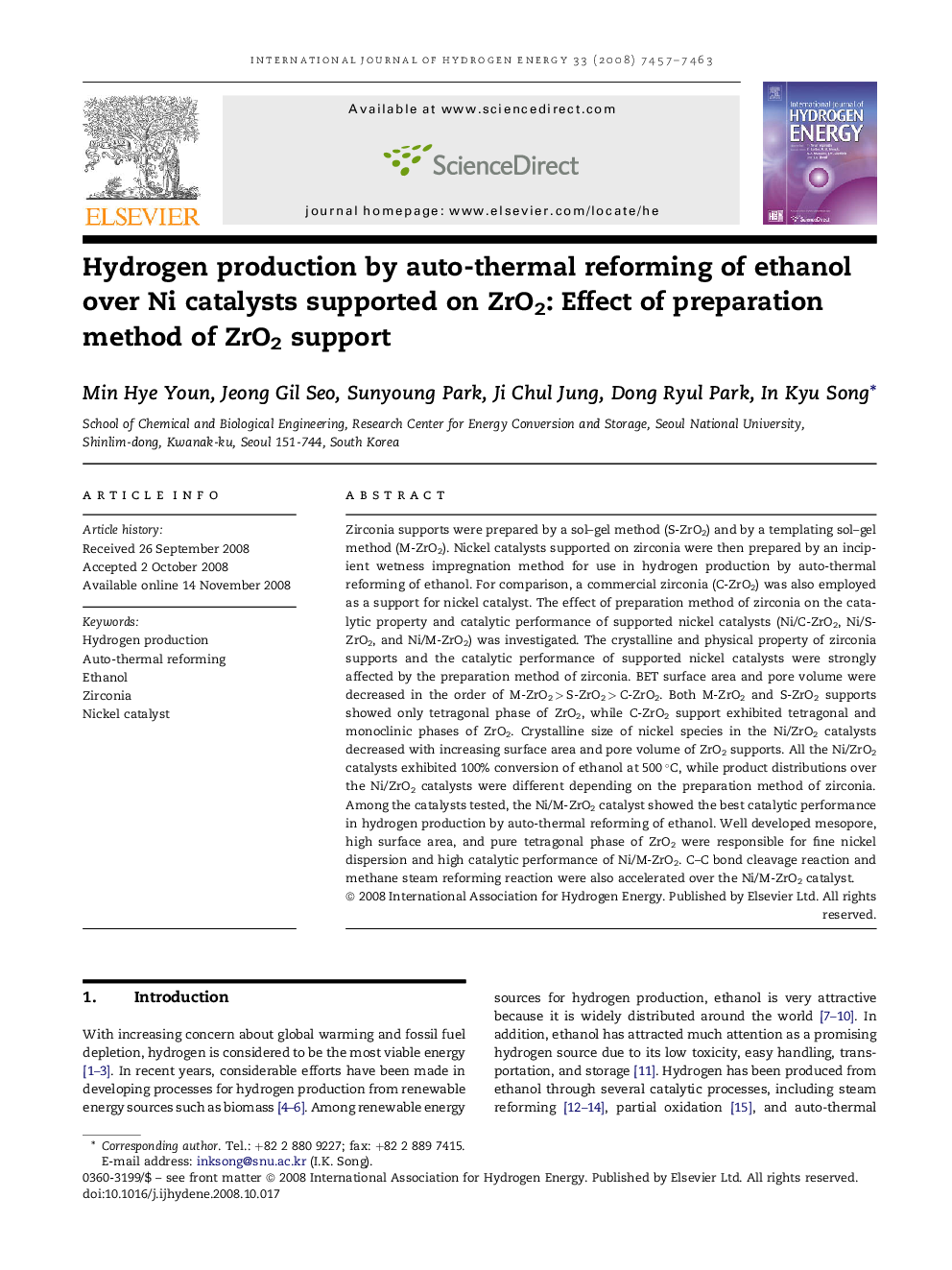| Article ID | Journal | Published Year | Pages | File Type |
|---|---|---|---|---|
| 1281343 | International Journal of Hydrogen Energy | 2008 | 7 Pages |
Zirconia supports were prepared by a sol–gel method (S-ZrO2) and by a templating sol–gel method (M-ZrO2). Nickel catalysts supported on zirconia were then prepared by an incipient wetness impregnation method for use in hydrogen production by auto-thermal reforming of ethanol. For comparison, a commercial zirconia (C-ZrO2) was also employed as a support for nickel catalyst. The effect of preparation method of zirconia on the catalytic property and catalytic performance of supported nickel catalysts (Ni/C-ZrO2, Ni/S-ZrO2, and Ni/M-ZrO2) was investigated. The crystalline and physical property of zirconia supports and the catalytic performance of supported nickel catalysts were strongly affected by the preparation method of zirconia. BET surface area and pore volume were decreased in the order of M-ZrO2 > S-ZrO2 > C-ZrO2. Both M-ZrO2 and S-ZrO2 supports showed only tetragonal phase of ZrO2, while C-ZrO2 support exhibited tetragonal and monoclinic phases of ZrO2. Crystalline size of nickel species in the Ni/ZrO2 catalysts decreased with increasing surface area and pore volume of ZrO2 supports. All the Ni/ZrO2 catalysts exhibited 100% conversion of ethanol at 500 °C, while product distributions over the Ni/ZrO2 catalysts were different depending on the preparation method of zirconia. Among the catalysts tested, the Ni/M-ZrO2 catalyst showed the best catalytic performance in hydrogen production by auto-thermal reforming of ethanol. Well developed mesopore, high surface area, and pure tetragonal phase of ZrO2 were responsible for fine nickel dispersion and high catalytic performance of Ni/M-ZrO2. C–C bond cleavage reaction and methane steam reforming reaction were also accelerated over the Ni/M-ZrO2 catalyst.
